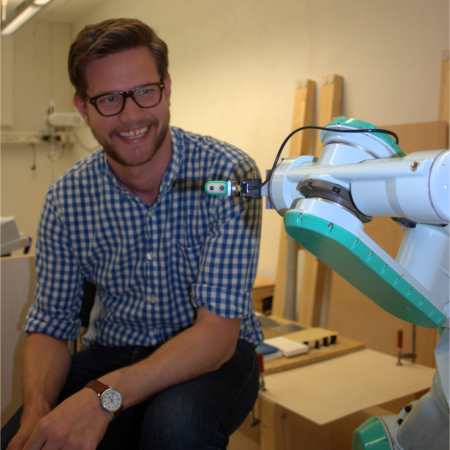Some New Designs of Convolutional and Recurrent Networks
Abstract: Convolutional networks (CNNs) and recurrent networks have driven the great engineering success of deep learning in recent years. However, as academics, we still wonder whether they are indeed the ultimate models of choice. Especially, CNNs seem unable to characterize predictive uncertainty, and they are highly dependent on small filters on small, rectangular neighborhoods. On [...]
Improving Multi-fingered Robot Manipulation by Unifying Learning and Planning
Abstract: Multi-fingered hands offer autonomous robots increased dexterity, versatility, and stability over simple two-fingered grippers. Naturally, this increased ability comes with increased complexity in planning and executing manipulation actions. As such, I propose combining model-based planning with learned components to improve over purely data-driven or purely-model based approaches to manipulation. This talk examines multi-fingered autonomous [...]
Language and Interaction in Minecraft
Abstract: I will discuss a research program aimed at building a Minecraft assistant, in order to facilitate the study of agents that can complete tasks specified by dialogue, and eventually, to learn from dialogue interactions. I will describe the tools and platform we have built allowing players to interact with the agents and to record those interactions, and [...]
Carnegie Mellon University
Scaling Up Deep Learning with Model and Algorithm Awareness
Abstract: In recent years, the pace of innovations in the fields of deep learning has accelerated. To cope with the sheer computational complexity of training large ML models on large datasets, researchers in the systems and ML communities have created software systems that parallelize training algorithms over multiple CPUs or GPUs (multi-device parallelism), or even [...]
Design, Modeling and Control of a Robot Bat: From Bio-inspiration to Engineering Solutions
Abstract: In this talk, I will describe our recent work building a biologically-inspired bat robot. Bats have a complex skeletal morphology, with both ball-and-socket and revolute joints that interconnect the bones and muscles to create a musculoskeletal system with over 40 degrees of freedom, some of which are passive. Replicating this biological system in a [...]
Attentive Human Action Recognition
Abstract: Enabling computers to recognize human actions in video has the potential to revolutionize many areas that benefit society such as clinical diagnosis, human-computer interaction, and social robotics. Human action recognition, however, is tremendously challenging for computers due to the subtlety of human actions and the complexity of video data. Critical to the success of [...]
Carnegie Mellon University
Underwater Localization and Mapping with Imaging Sonar
Abstract: Acoustic imaging sonars have been used for a variety of tasks intended to increase the autonomous capabilities of underwater vehicles. Among the most critical tasks of any autonomous vehicle are localization and mapping, which are the focus of this work. The difficulties presented by the imaging sonar sensor have led many previous attempts at [...]
Deep Learning for Robotics
Abstract: Programming robots remains notoriously difficult. Equipping robots with the ability to learn would by-pass the need for what otherwise often ends up being time-consuming task specific programming. This talk will describe recent progress in deep reinforcement learning (robots learning through their own trial and error), in apprenticeship learning (robots learning from observing people), and [...]
Temporal Modeling and Data Synthesis for Visual Understanding
Abstract: In this talk, I will present two recent pieces of work on leveraging temporal information and synthetic data to enhance video and image understanding. In the first part, I will introduce a progressive learning framework, Spatio-TEmporalProgressive (STEP), for action detection in videos. STEP is able to more effectively make use of longer temporal information, [...]








